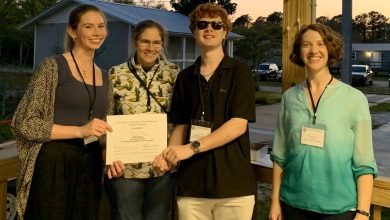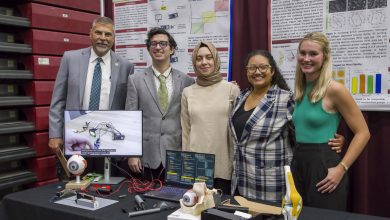Telescope Mania
Florida Tech’s Student Astronomical Society went to the Harmony Dark Sky Festival on February 2. The festival is an annual event held in the tiny town of Harmony, about 35 miles from Melbourne. Starting in the late afternoon, people set up booths in the middle of town, mostly food and space-related (which we could check out before nightfall). There were carnival rides for little kids set up on the opposite side of the square. Once the dark sky was upon us, we took up our shifts manning the telescopes we brought from Florida Tech’s collection.
We set up three of the university’s Mead telescopes among the 20-30 telescopes other attendees brought. Around dusk, stargazers started showing up to look through the telescopes and they didn’t stop coming all evening! It was excellent. We couldn’t have asked for a more beautiful night, either. All of us Florida Tech nerds were really happy to see so many people waiting in line just to gaze up at the skies.
My shift to man the telescope started around 8 p.m. It was pointed at the Orion Nebula (pictured below), so I got to repeat phrases like, “The nebula is called a stellar nursery because new stars are forming from the clouds of dust and gas surrounding them,” and “It is approximately 1,500 light years away, meaning the light you’re seeing took 1,500 years to reach the Earth.” That last statement really blew some peoples’ minds when I explained that meant they were seeing the nebula as it looked 1,500 years ago, meaning they were technically looking into the past. The wonders of science!
There were some technical difficulties with the telescopes, especially when someone would trip over a wire and we’d lose power to them. They don’t require power to look at the sky, of course, but these telescopes can automatically track objects as they move across the sky. The automatic tracking wasn’t working for a good part of my shift because of the power problems, so I needed to manually find the nebula through the eye piece using the remote control. Luckily, the same problem came up in my observational astronomy class a few weeks ago, so I knew what to do. For a good 40 minutes I had to check the nebula’s position through the eye piece after every two or three viewers and adjust accordingly.
Overall, the night was a blast. I enjoyed it a lot more than I thought I would, considering I knew I would most likely be helping with the telescopes most of the night rather than observing anything myself. It was wonderful to see so many people come out on a Saturday night with their kids to look at the skies. The telescope area was crowded for the entire festival. It may seem like a simple thing, letting the public use our telescopes to observe. For all we know, though, we may someday be the inspiration for a future scientist or budding astronomy and astrophysics major.
Photo credit: http://lightvortexastronomy.blogspot.com/2012/12/imaging-orion-nebula-m42.html






